If you’re noticing yellow orchid leaves, you’re not alone — this common issue can be a source of concern for many plant enthusiasts. Yellowing leaves on plants can indicate a variety of problems, ranging from overwatering and underwatering to nutrient deficiencies or environmental stress. Understanding the underlying causes is crucial for restoring your orchid's health and vitality. In this guide, we’ll explore effective solutions to help you diagnose the issue and provide the care your orchid needs to thrive.
Table of Contents
What Does a Sick Orchid Look Like?
Ailing orchids typically reflect a number of stress signals that may include yellowing leaves, wilting, brown spots, or simply failure to thrive. Root causes for such symptoms include overwatering, underwatering, lack of sufficient light, nutrient deficiency, and infestation by pests.
What do overwatered Orchid leaves look like?
Overwatered orchid leaves typically display several distress signals, including yellowing, especially in older leaves, which indicates a lack of nutrient absorption due to stressed roots. The leaves may feel soft and mushy to the touch, a sign of waterlogged conditions, and can appear wilted or droopy despite the excess moisture. Additionally, you might notice dark brown or black spots on the leaves, as well as mold growth on their surfaces. When inspecting the roots, overwatered orchids often show brown, black, or mushy roots instead of the healthy, firm white roots that indicate proper hydration.
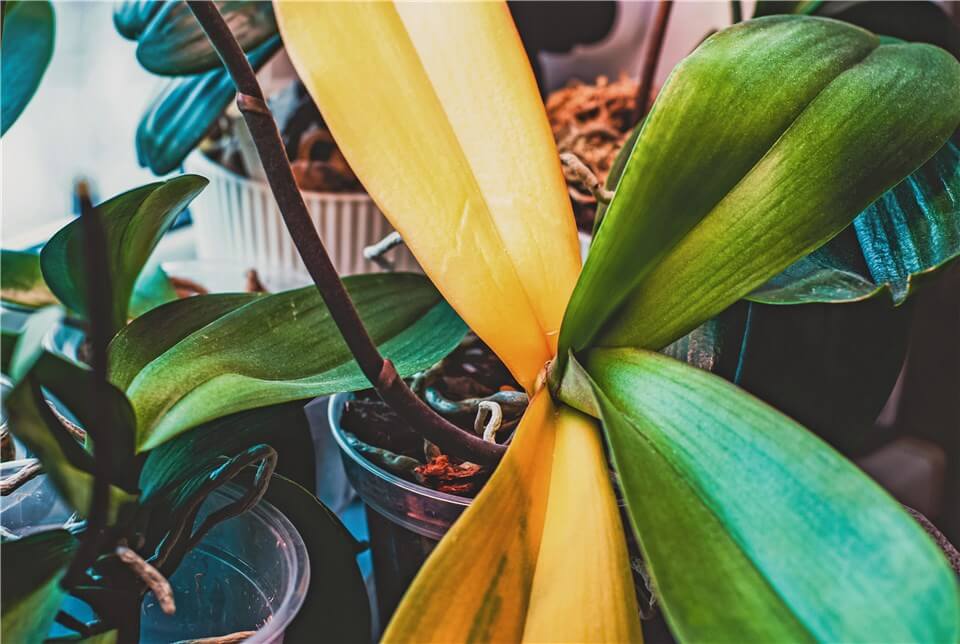
Overwatered Orchid
What does an underwatered Orchid look like?
An underwatered orchid typically shows several clear signs of distress, primarily characterized by wrinkled or shriveled leaves, which can appear limp and less plump than usual. The leaves may also develop a yellowish hue, especially the older ones, as the plant struggles to retain moisture. Additionally, you might notice that the roots appear dry and possibly discolored, lacking the vibrant green or white color of healthy roots. In some cases, the orchid may exhibit wilting, and flower buds can drop prematurely. These symptoms indicate that the plant needs immediate attention to restore proper hydration and revive its health.
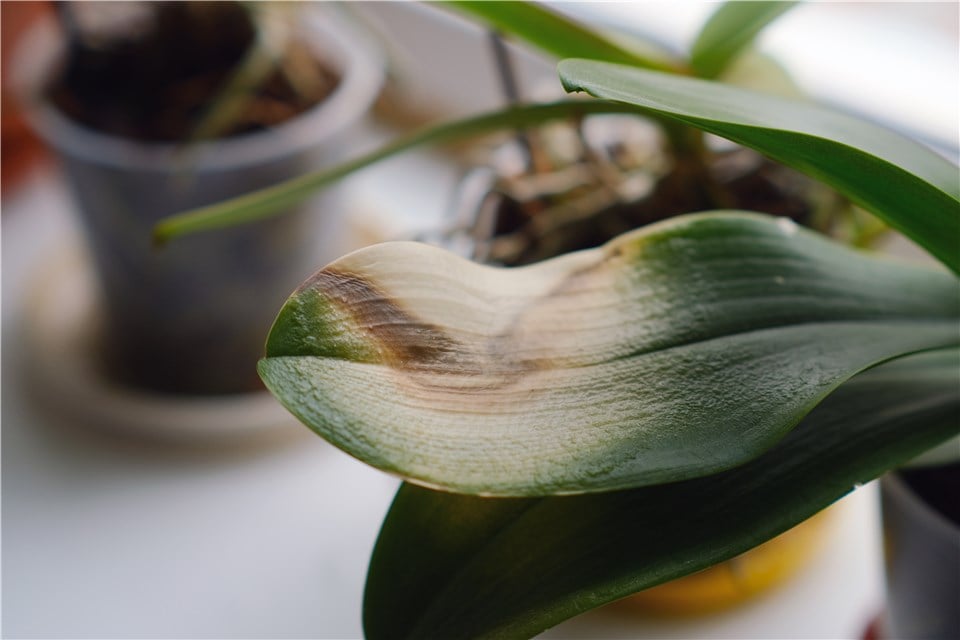
Underwatered Orchid
What does a stressed Orchid look like?
A stressed orchid typically shows several signs of distress, including yellowing leaves that may appear limp or wrinkled. These cases indicate issues with hydration or nutrient absorption. Additionally, the leaves might develop dark spots or blemishes, and some may drop prematurely. The roots may appear brown and mushy if the plant is overwatered, or dry and shriveled if underwatered, both of which signal stress. Flower buds may also fall off or fail to open properly, and overall growth may slow down or stagnate. If you notice these symptoms, it’s crucial to evaluate the orchid’s care conditions - such as watering, grow light, and temperature.
Why Are My Orchid Leaves Turning Yellow?
If your orchid leaves are turning yellow, it can be a sign of various issues. For example, the most frequent reason for orchid yellow leaves can be overwatering or underwatering. If you want to make your orchid grow well, you should find a balance of watering. Generally, you should water them every 7 to 10 days, but the specific time is also affected by the potting medium. It’s essential but easy to know if your orchid needs water. Check the potting medium before watering - if the top inch feels dry, it’s time to water, while moist medium indicates you should wait a few more days.
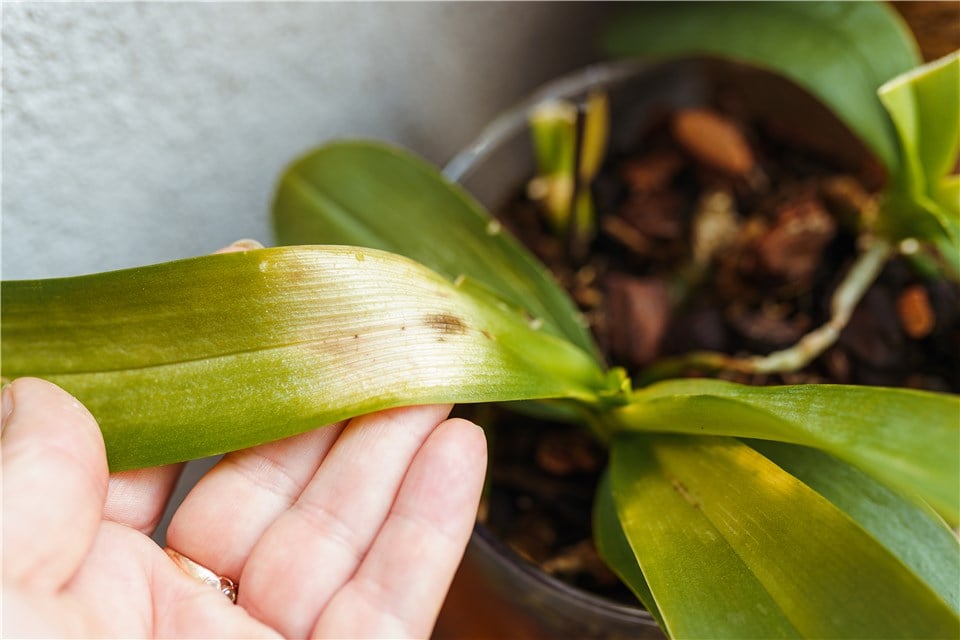
Sunburn on Orchid Leaves
Despite the wrong frequency and amount of watering, there are some other factors that may lead to orchid yellow leaves. Before learning how to get rid of and prevent from orchid yellows leaves, let’s take a quick look at what causes orchid leaves to turn yellow.
- Overwatering: This is the most frequent cause. Excess water can lead to root rot, preventing the plant from absorbing nutrients and causing leaves to yellow accordingly.
- Underwatering: Conversely, not providing enough water can also stress the plant, leading to yellowing leaves as the orchid struggles to survive.
- Improper Light Conditions: Orchids thrive in bright indirect light. Too much direct sunlight can scorch leaves, while too little can cause them to turn yellow and drop.
- Nutrient Deficiency: Orchids require specific nutrients, particularly nitrogen. A lack of essential nutrients can result in yellow leaves. If you notice yellowing leaves, especially if they are yellowing around the tips or edges, it may indicate a lack of these nutrients.
- Temperature Stress: Extreme temperature, either too hot or too cold, can stress Orchids, leading to yellowing leaves.
- Pests and Diseases: Insects like aphids or issues like fungal infections can cause discoloration and overall deterioration of the plant’s health.
- Natural Aging: Older leaves will naturally yellow and die off. This is regared as part of the plant’s life cycle, particularly if they are at the base of the plant.
Should You Cut Off Yellow Orchid Leaves?
No, it’s not necessary to cut off yellow orchid leaves unless they are affected by disease or pests. If the oldest leaves, which are at the base of the plant, are turning yellow naturally as part of the plant’s life cycle, you can leave them on until they dry up and fall off on their own. However, if younger leaves are turning yellow prematurely, it could indicate an issue like overwatering, nutrient deficiency, or disease. In these situations, it is not recommended to remove these orchid's yellow leaves. Instead, you should try to find the reasons behind it and resolve the problem. Focus on providing proper orchid care - bright indirect light, appropriate watering, humidity, and fertilization, since this will further prevent and treat yellow leaves.
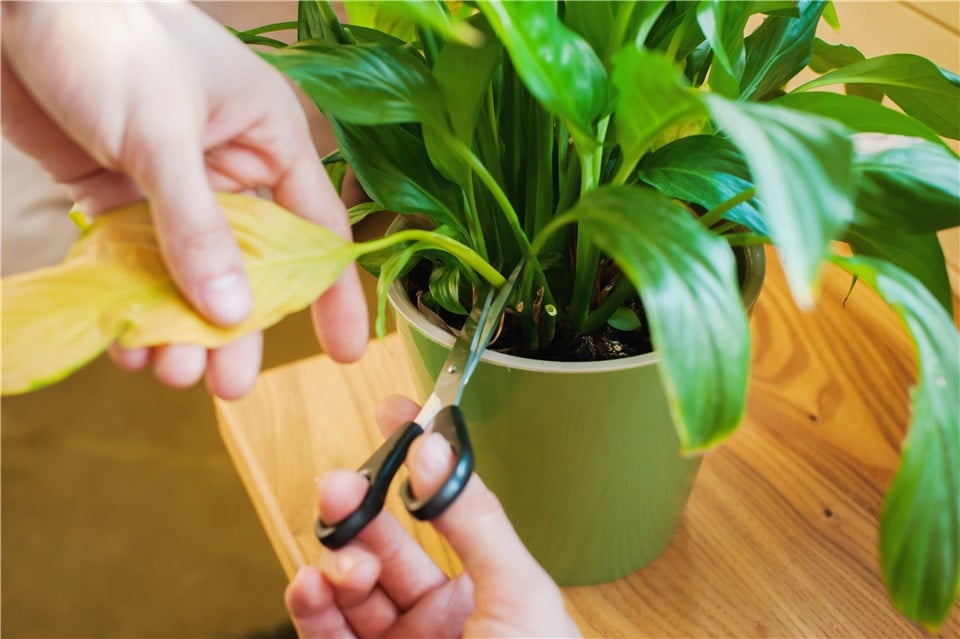
Should You Cut Off Yellow Orchid Leaves
How Do I Fix Yellow Leaves on My Orchid?
Upon identifying why my orchid leaves are turning yellow, discover the specific solution for each reason. Check the table below and fix yellow leaves on your orchid with ease.
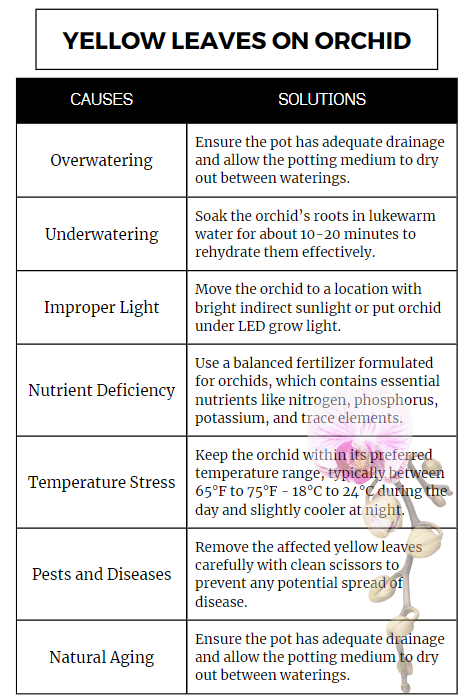
Fix Yellow Leaves on My Orchid
In Conclusion
With the right knowledge and steps, you can transform your orchid back to its vibrant self and make it continue to bloom beautifully for years to come.


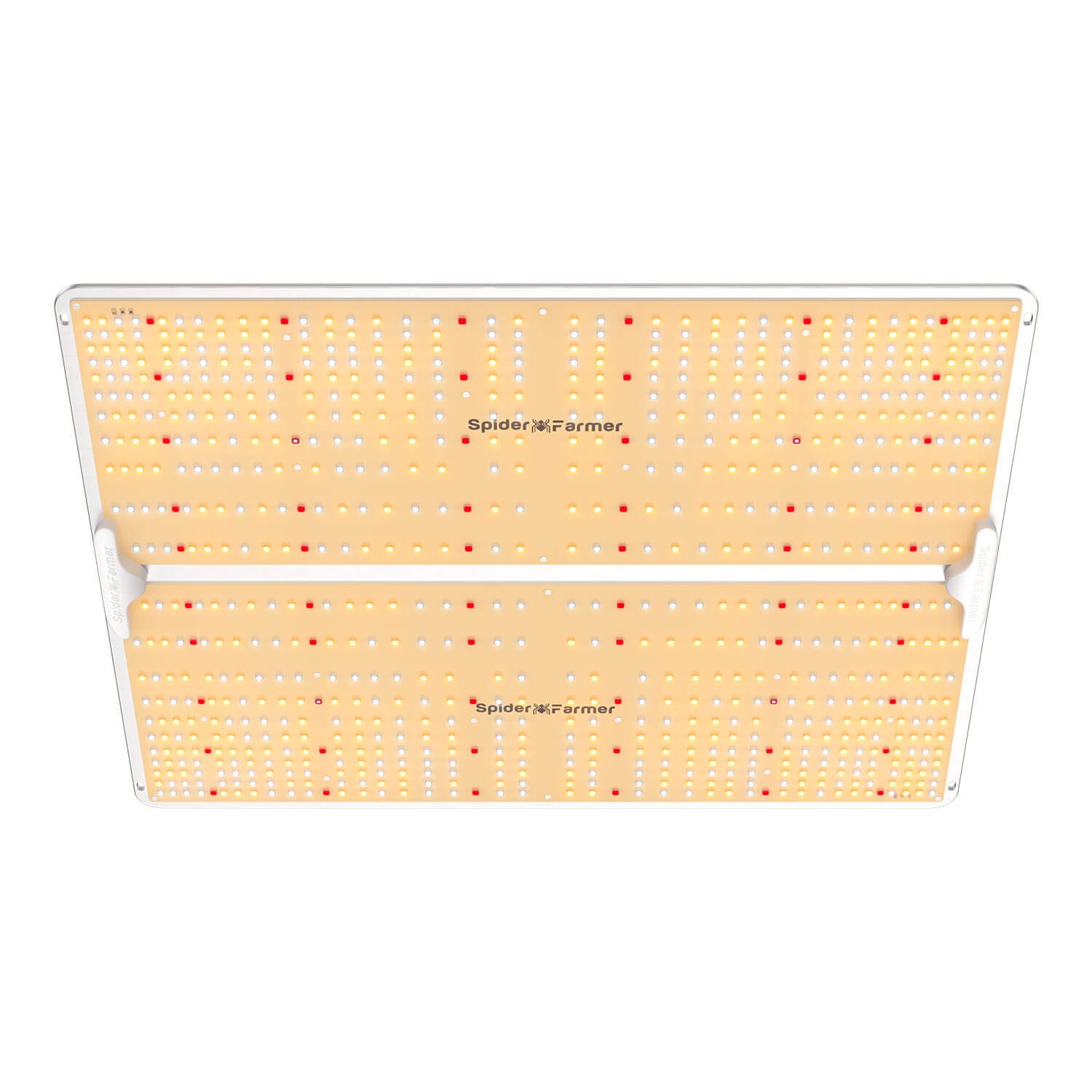












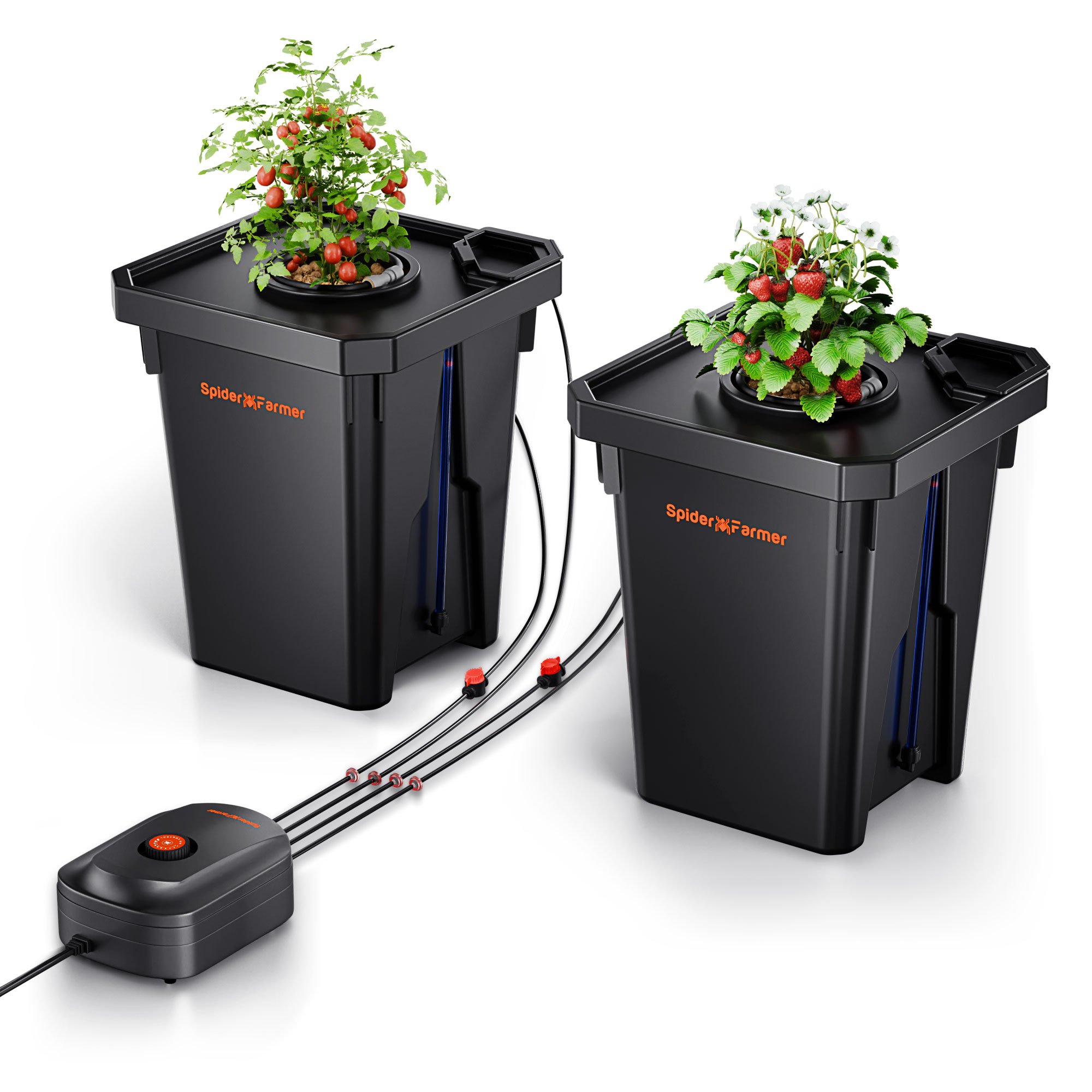

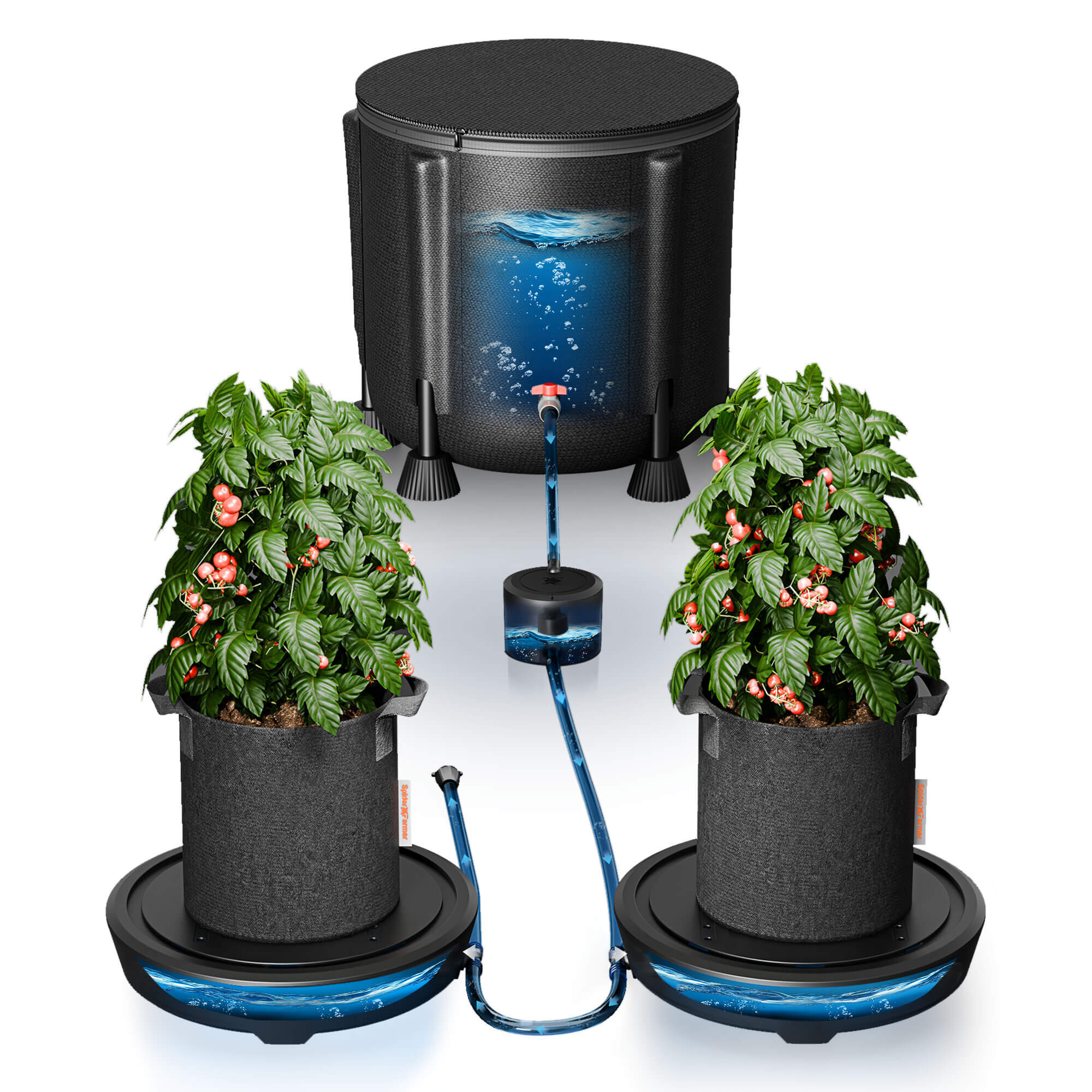
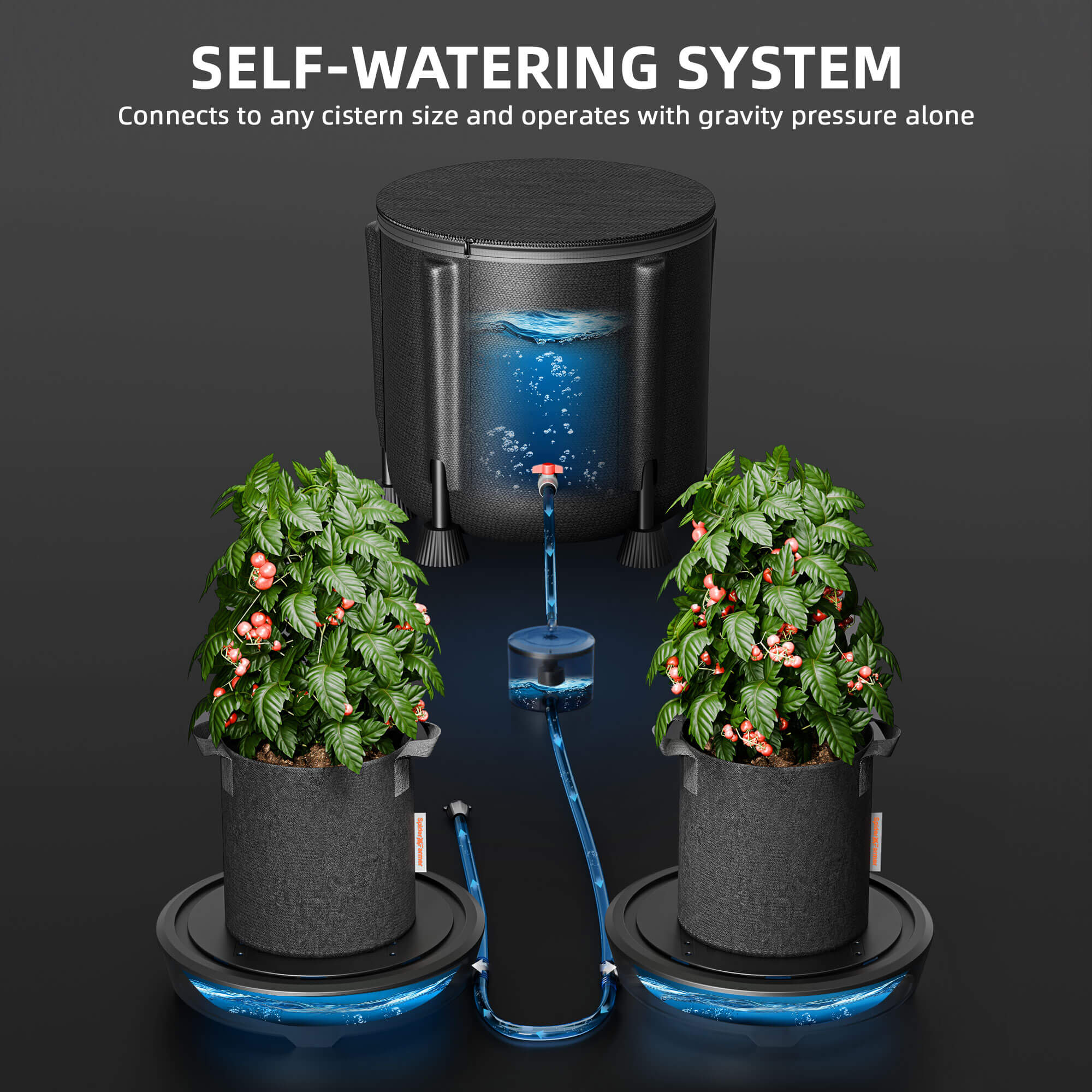
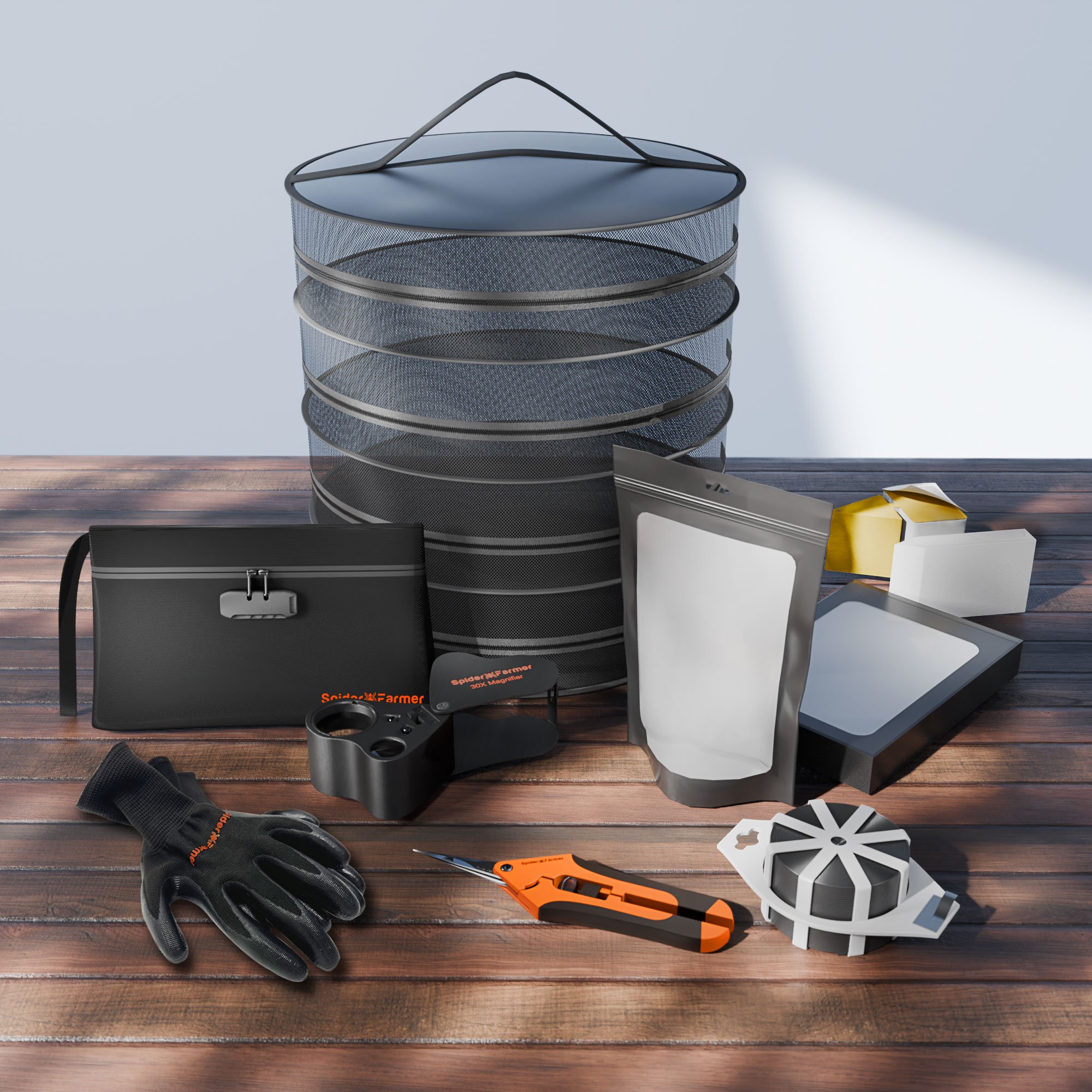



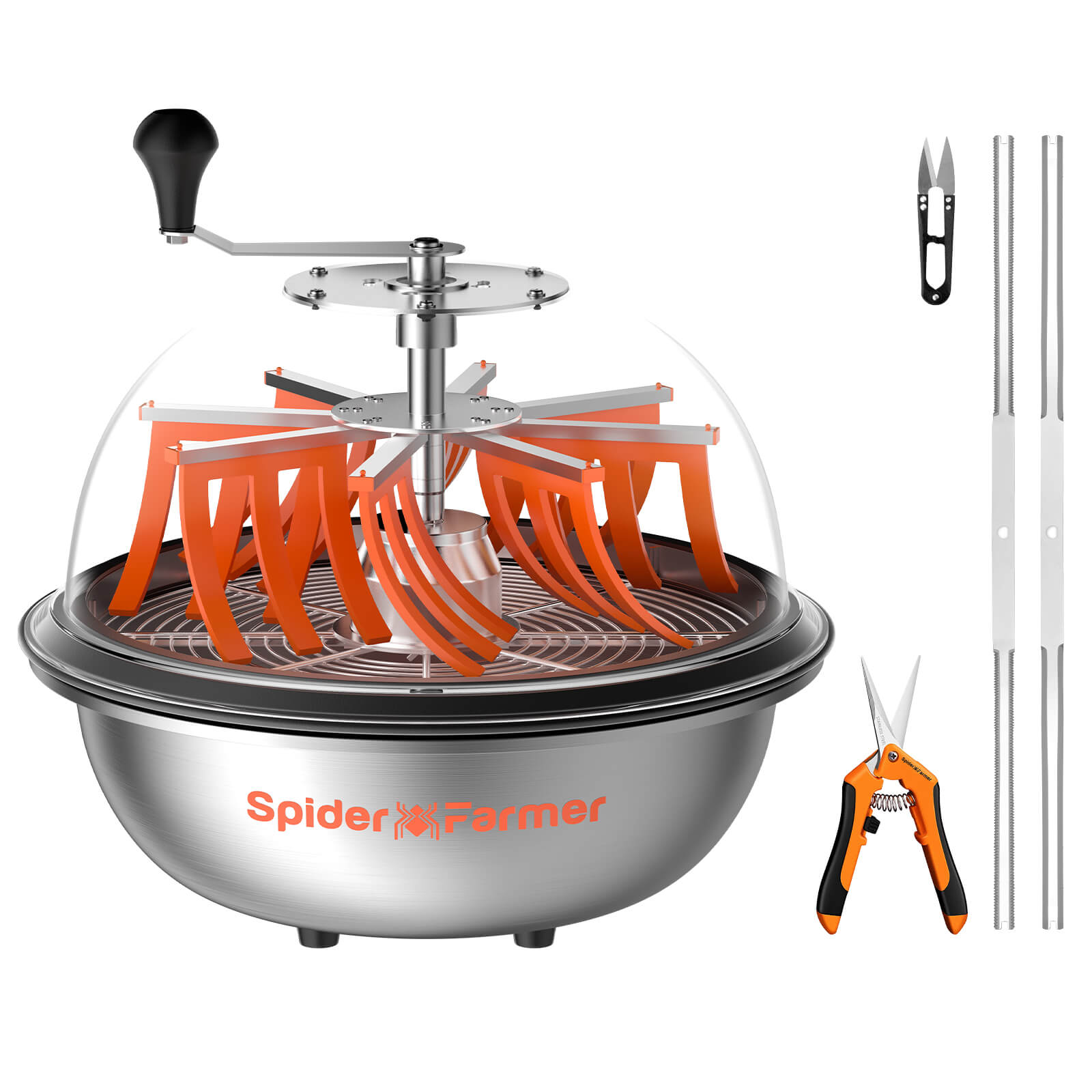


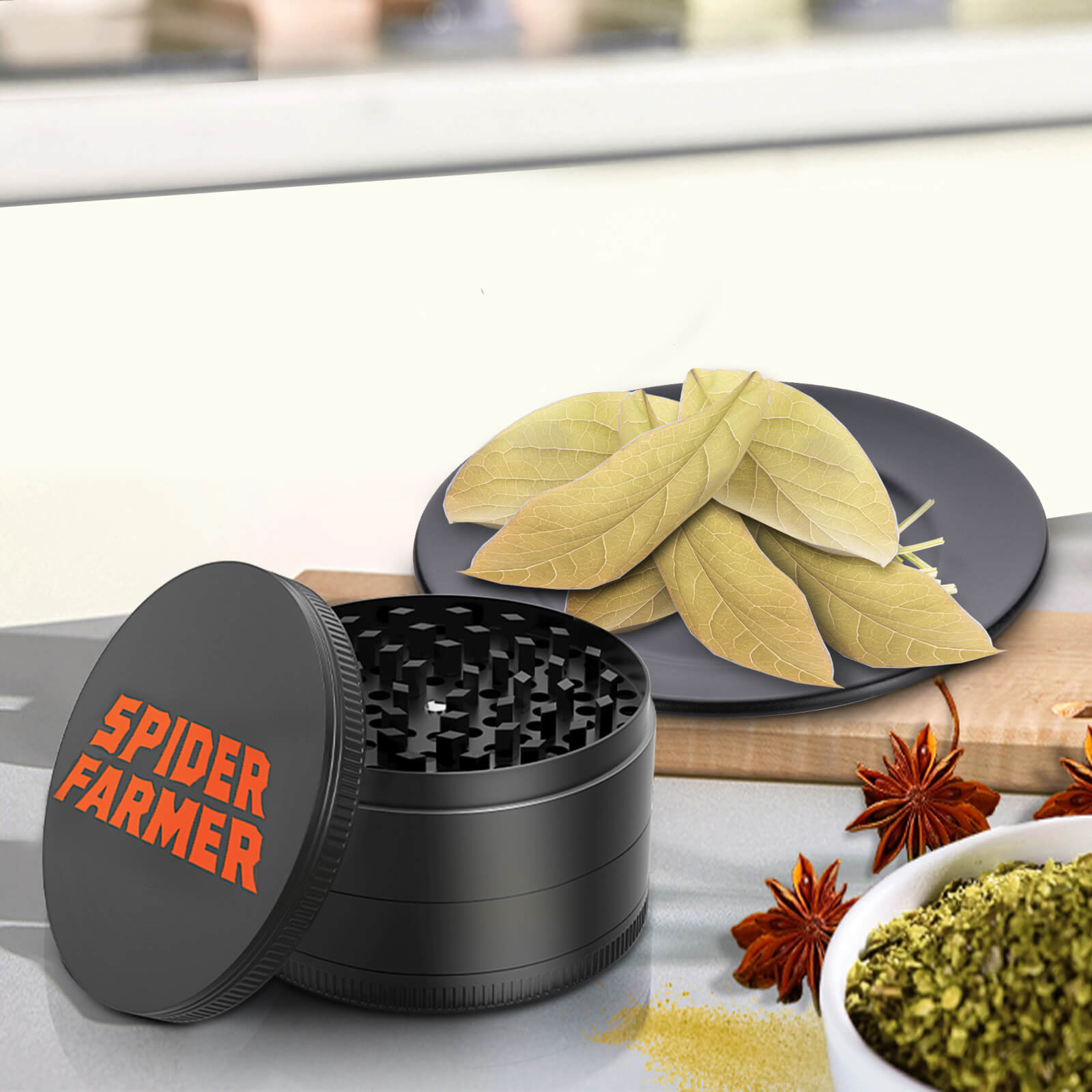




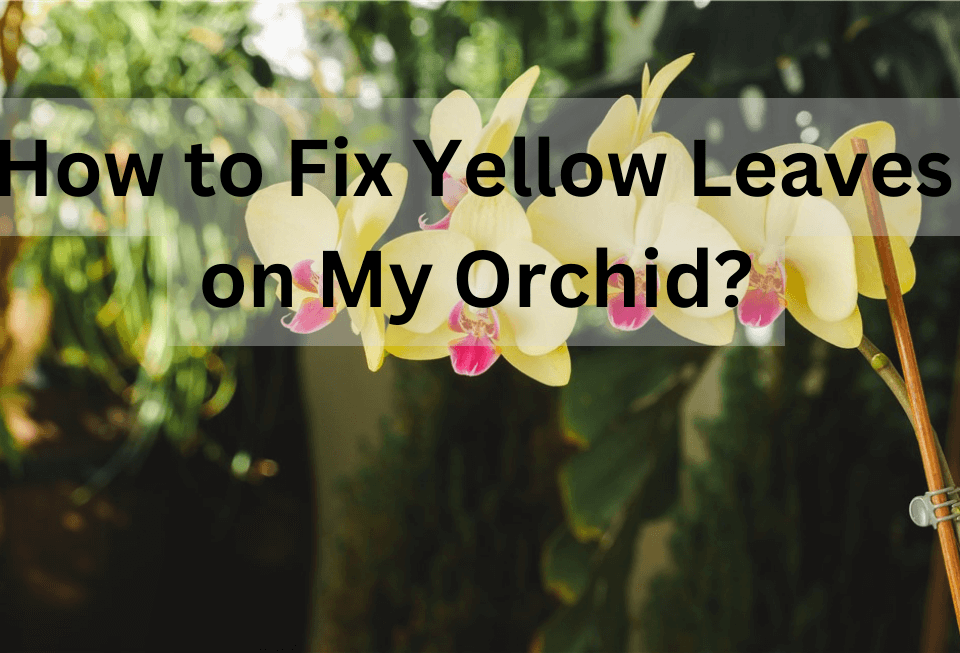

Cybidiams.orchards. need help please. Turning yellow leaves black spots .brown leaves. It’s a worry.
What do I do…
Did you try the solutions we list above?